A hellebore appears to have flowers of varying colors, one nearly white. the other noticeably darker (below). Of course, this is not a single plant but two seedlings growing so close as to appear as one.
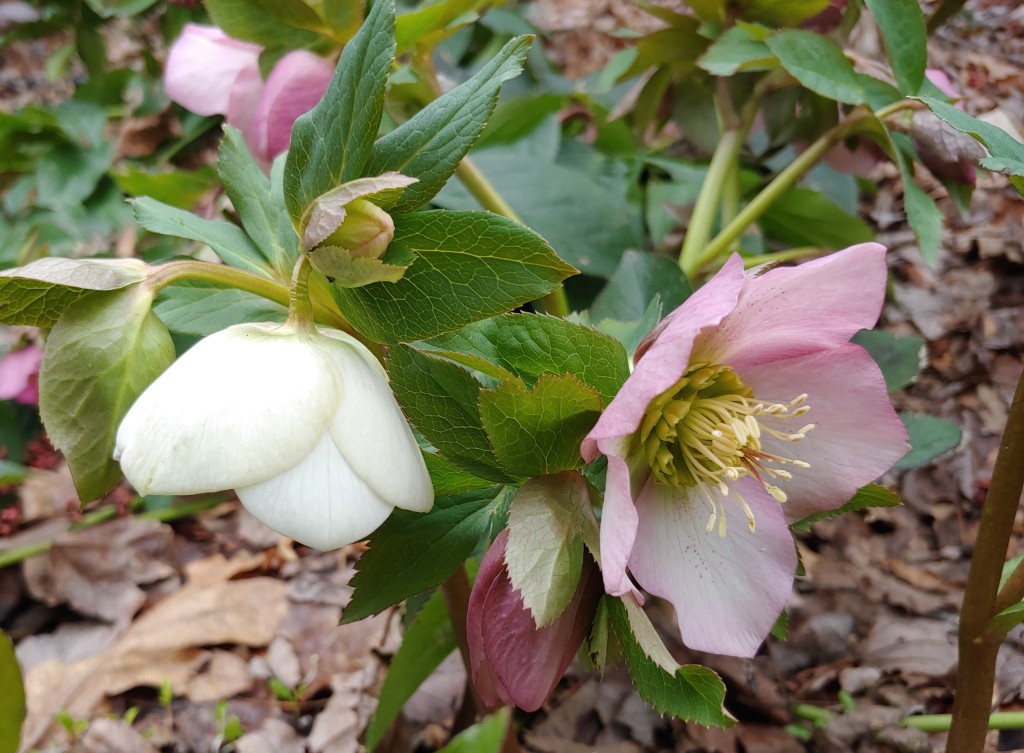
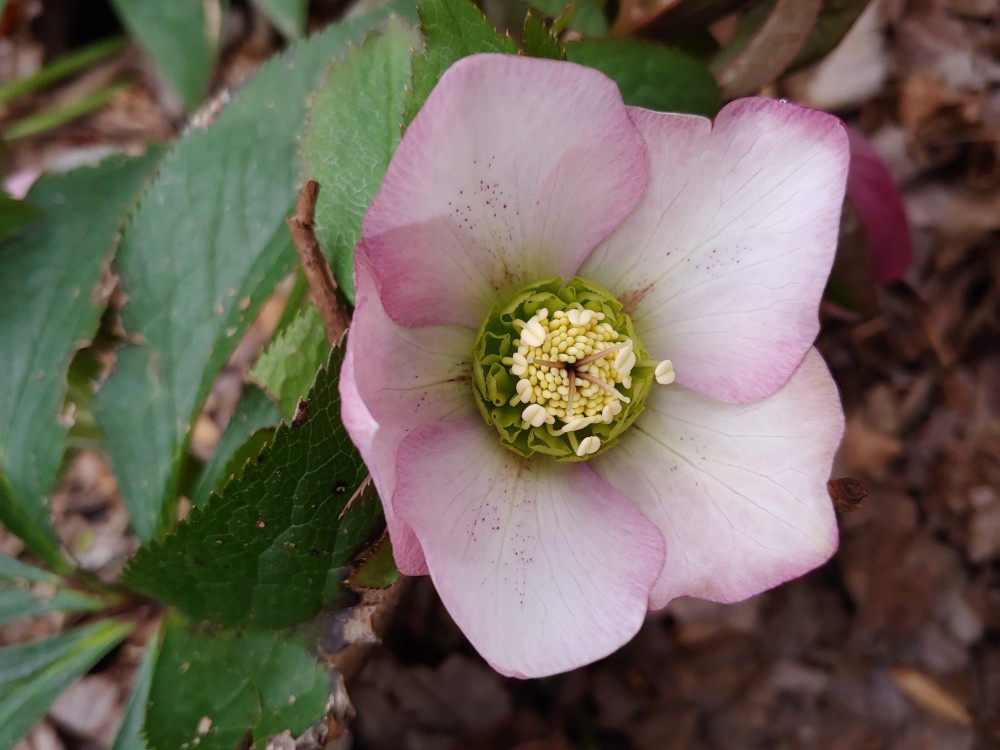
Many of the most vigorous of the garden’s hellebores produce abundant seedlings. Some grow a distance away, where rainwater carried the seed, and this is quite evident as seedlings line a depression that spills drainage from bluestone paving just outside the basement door. Other seeds germinate where they fall, beneath the dense canopy of the parent’s leaves, and these must be transplanted or weeded out to relieve congestion. There is no advantage to leaving seedlings to grow into a jumbled mass that diminishes the parent and seedling.
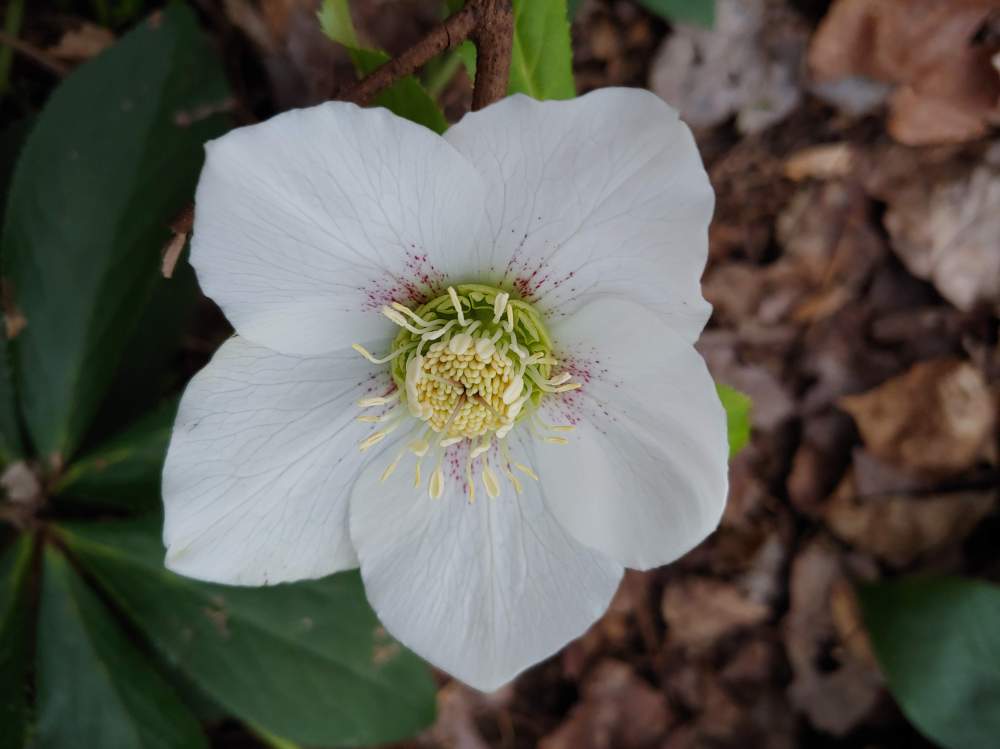
The timeline to the first hellebore plantings in the garden is unclear, but certainly these were started at least a decade ago, probably closer to two. While I’ve planted dozens, starting with old timers with downward nodding blooms, to more recent introductions with fancy, double flowers that stand erect for better viewing, in that time there have been hundreds of seedlings, and dozens have been left in place or transplanted to give more room. As seedlings reach a sturdy size ideal for transplanting, sometimes in the second, but often the third year, a space is found, often beneath overhanging branches of an Oakleaf hydrangea (Hydrangea quercifolia) or sweetshrub (Calycanthus floridus). Despite the maturity of the garden, there are many such spaces available, though I admit I’ve also strayed a bit over the property line.
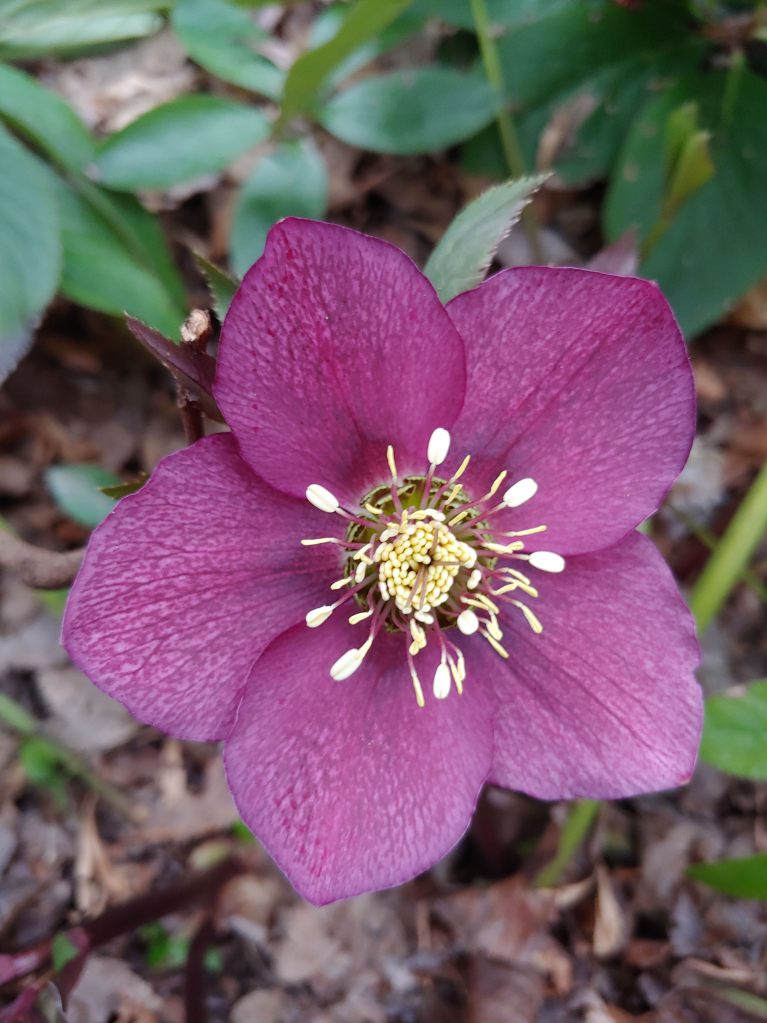
Flowers of seedlings often display little variation from the parent plant, but first time flowering is curiously watched in case the blooms differ. And some do, with more pointed tips of petals, or lighter or darker coloring, but even when there is little variation, I am overjoyed to see hundreds of blooms in February.

Two seedlings, nearly beside each other where rainwater carried seeds to beneath a Chinese dogwood (Cornus kousa), have much larger than typical flowers. One is the usual off white, the other a variation of the standard purple, almost black. These are within a hodgepodge of similar seedlings, but both require a more prominent position.
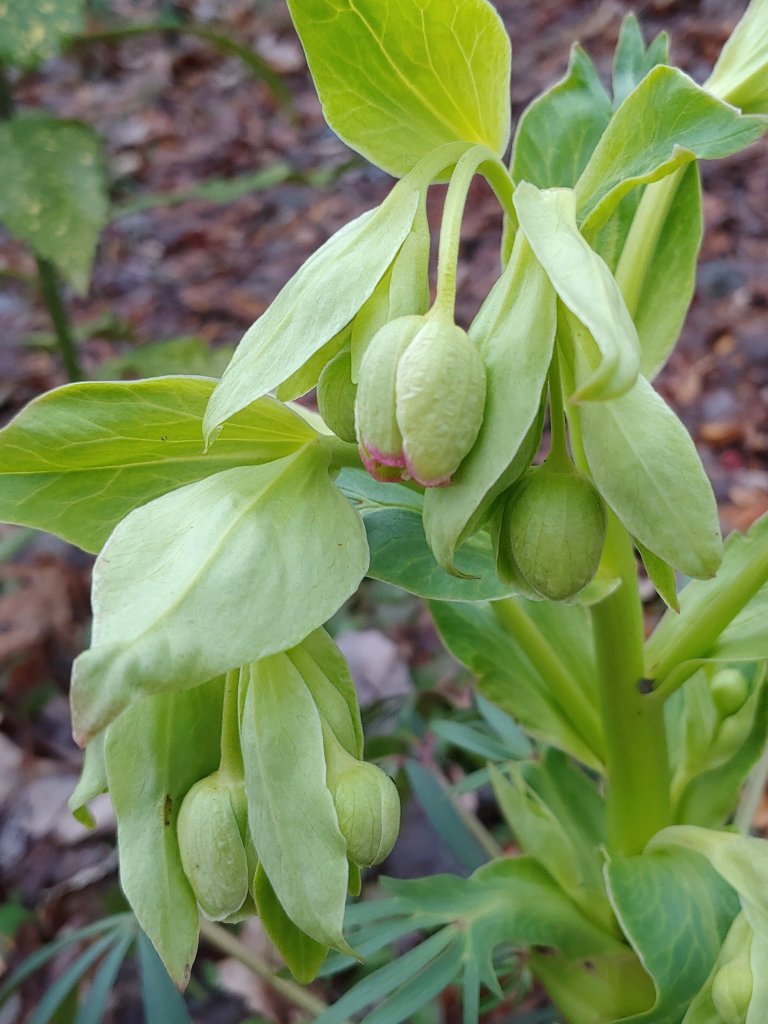
Last year, I transplanted a number of what is called stinking hellebore (Helleborus foetidus, above), that are distinctive with more deeply cut foliage, and very unusual flowers. In case there are doubts about the variability of seedlings, I’ve never purchased a stinking hellebore, or anything like it. But undoubtedly, there are hybrid hellebores in the garden that are bred with it, and so an occasional seedling. These are more a curiosity than of ornamental value, but all are welcomed.
Nice photos as always Dave… and that hellebore has an interesting name. I’m guessing it’s not very fragrant? 🤪
I hear that the stink is barely recognized. My sense of smell is very limited so I’m not a fair judge.
You have some beautiful seedlings there! I’ll have to pay more attention to the volunteer hellebores in my garden.
Most seedlings are nearly identical to the parent, so if a variety are desired there could be good reason to weed them out. Otherwise, they’re as good as any you would buy.
I do envy you all your lovely seedlings. I’d surely cry if I had to “weed” any of those out.
I give away seedlings to anyone who wants them, and pot some for a garden club plant sale. Others are transplanted, but there are more than I care to keep. It’s nice to have the luxury to discard plants that would become beauties in a few years.
Well, if you ever feel like figuring out a way to meet up (I’m in Rixeyville), I’m always willing to take any extras for my fledgling Hellebore garden. The few that I have are doing quite well, so I know they’re happy.
I have commitments the next two weekends, but after that I’ll be working to clean things up, at least the first half of each weekend day
That seems to be the ‘in’ flower this week. The more I see of them looking so good, the more I want reexamine mine. They do not do so well in the climate here. I have never been impressed with them, even when we grew them on the farm. Those that are here now have been here for many years. No one remembers them not being here. It is impossible to know which ones were actually planted, and which ones are feral. Regardless, I can not get rid of them now, so may as well appreciate them.
Well I’m certainly open to anything that would work for you. Am retired, so my time is pretty much my own. Is there any way to private message on this forum so that we could eventually (if you’d like), set something up at your convenience?
You seem to have replied to the wrong comment. I believe your reply is for the comment above.